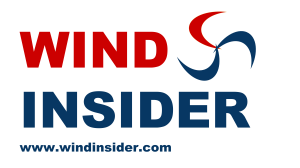Reading Time: 3 minutes
Opinion piece by
Aashish Swarup, Head – Wind Business, Sprng Energy | ex COO of Continuum Energy and Skeiron Renewable
Windfarm development & construction (D&C) decisions and execution are irreversible in nature and decide the windfarm’s financial performance. 85-90% of life cycle costs are spent during the D&C phase. This necessitates the need for extremely high involvement during the development and construction phase. In my experience focused efforts in the D&C phase can result in
- Lowering windfarm life cycle capital cost at least by 5%
- Achieving an energy yield of the P75 and P50 range. Further, P50 can be targeted; with the help of high-density wind data in India
- Significant reduction (~ 80-90%) in D&C risks (mainly right of way, crane movement, and approvals) by plant layout, micro-detailing of land & site, and granular leveling planning with agile delivery if a decision to the front line.
- Achieving plant availability of above 99%
- Reduction of electrical losses below 3%
- Significant reduction in interest during construction and starting revenues early by executing feeder wise
The major challenge in achieving P50 performance is risk aversion by project developers (IPP) in taking control of the D&C scope. These reimagined windfarms require the involvement of CXO in
- challenging existing thumb rules
- setting the right decision matrix (reduction in the wake by acquiring the best suitable lands, reducing commodity use per km as well as per turbine),
- ensuring prompt delivery of decisions to the front line
- strengthening holistic techno-commercial skills across levels
- encouraging a culture of micro-detailing at every step every day
The most crucial decisions like siting of turbines, wake effect, plant layout, and equipment selection based on life cycle risk-return equation are left to junior to mid-levels within the organization of the project owner or its contractors. Also, understanding of the subject is not up to the mark across the chain from the owner to the last person who takes the action, and also there are conflicts of interest and a lack of control and collaboration across the chain of individuals and owners to last subcontractor.
Reimagining windfarm must start by looking inwards and questioning our own beliefs about wind energy projects. Managements must focus beyond excel sheets, increase boots on the ground, train teams to take techno-commercials decisions and increase the use of technology (AI, ML, collaboration software, equipment tracking, etc) in development and construction. D&C digitalization has not started in the industry. We need to get our priorities right and use AI & ML to encourage collaboration between WRA, costing, D&C, design, and engineering and develop algorithms that make the best use of dynamically changing D&C variables activities.
The cost of poor quality (COPQ) never gets the attention of decision-makers and we end up building suboptimal windfarms. We need to go back to the drawing board starting at a pre-feasibility stage to find COPQ (cost of poor quality) and work towards getting things right in the first attempt. Developers must focus on extreme detailing of every aspect and maths of every dollar of life cycle cost to achieve P50 performance and reduce LCOE drastically. Wind energy is here to stay to achieve the most optimal mix of resources in our national energy mix. Current challenges in wind energy are the opportunities to transform D&C practices. This transformation process must include breakthroughs and continuous improvement initiatives.
The views, thoughts, and opinions expressed in the text belong solely to the author, and not necessarily to the author’s employer, organization, committee, or other group or individual.

















